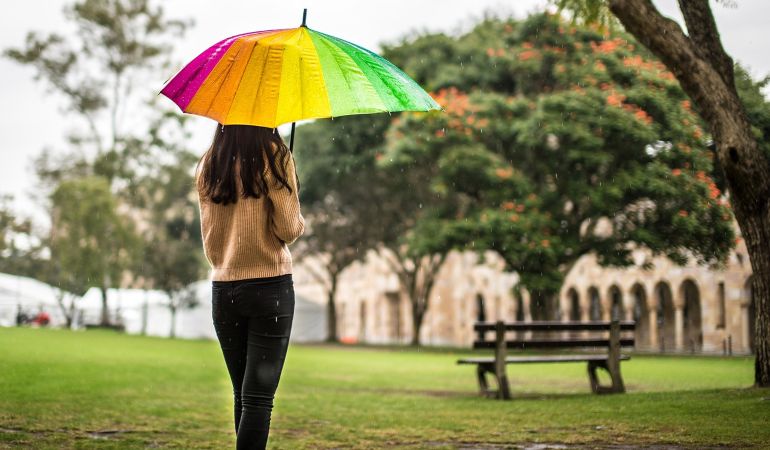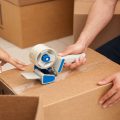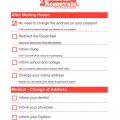
Moving day is always an adventure, but bad weather can add an extra layer of challenge. Since most people start preparing a month before the move, they can’t be sure whether they’ll luck out with a nice sunny day or if they are moving house in the rain.
Even light precipitation can cause a great deal of inconvenience and pose additional obstacles. From keeping your belongings dry to protecting your home’s floors and carpet from the mud and ensuring everyone’s safety in slippery conditions, there are plenty of details you must take care of.
So, what should you do if your moving day turns out to be a rainy one? Here are some insightful tips for moving house in the rain that will help you have a smooth and trouble-free relocation.
Table of Contents
Check the weather forecast
Knowing what to expect might be half the preparation for some. It’s the first thing to do if the time of the year causes more trouble than simple rain. Check the weather forecast every day during the last week before the move. This will give you enough time to make some additional preparations. Compare the forecast between two or more weather websites to be sure.
Pack your belongings
Packing has to start at least two weeks before the moving date. No matter what the weather has in store for you, your belongings have to be neatly packed and ready for delivery. However, it is important to plan ahead and take precautions if the weather forecast predicts rain on your moving day or if you are relocating to or living in an area with a lot of rain.
When it comes to moving house while it’s raining, keeping your items dry is essential. By waterproofing your belongings effectively, you won’t worry about water damage and ensure your move is safe and successful despite the weather conditions.
Use quality moving boxes
Choose new, sturdy cardboard moving boxes as they are more durable and can protect your belongings from moisture. Ensure a tight seal with packing tape to further protect the items. Be careful with older boxes, as they may be worn out in places or already compromised by previous use, so if they become wet, they can easily lose their structural integrity.
However, if you are using older boxes, don’t forget to take some extra precautions:
- Wrap cardboard boxes with lots of tape to ensure their durability; then, wrap with stretch wrap to protect them from moisture.
- Thoroughly inspect for tears or holes and seal them with additional tape.
- To minimise water infiltration, line the bottom of the box with a plastic sheet, cloth or trash bag. Cover the contents with the plastic covering and tape them securely.
- For added protection, place your belongings in plastic bags before placing them in boxes.
Check also: Where to Get Free Boxes for Moving
Use plastic bins
Plastic boxes offer unparalleled protection for your belongings when moving in the rain. They ensure water cannot seep through, keeping your items safe and dry regardless of how heavy the rain is. Ensure lids fit tightly; cover any openings with plastic and tape them.
Protect electronics and sensitive items
Water poses a significant risk to electronic equipment and household appliances. When moving items like TVs, fridges, washers, or sensitive electronics in the rain, it’s crucial to prevent moisture exposure. Pack them in their original or similar-sized boxes with ample padding, seal them securely, and wrap them in moving blankets and high-quality plastic coverings to keep them dry and safe during the move.
Label the boxes as items that must not be wet, and if possible, wait for the rain to stop before transporting them.
Label the items that must not get wet
Ensure your removal team is aware if there are items that might be damaged if they get wet. Using a bright-coloured, permanent marker clearly label all sides of boxes and wrap the items that are vulnerable to water damage. By doing so, your movers will be aware that these items must be handled carefully and will do their best to prevent moisture from getting to them.
Check also:
Take health & safety measures
Moving in the rain presents a significant risk as even seemingly stable ground can become slippery and increase the danger of slipping and falling on wet surfaces. This risk is even greater when carrying heavy boxes and unable to see your feet. Therefore, following some tips for moving in the rain will help you avoid accidents and ensure your smooth relocation:
- Wait out to see if the rain is accompanied by thunder and lightning – thunderstorms are dangerous, especially if you have to haul large metal items. Even if you are late, wait for the storm to pass before proceeding with the move.
- Wear proper gear – since you’ll be hauling heavy items, it’s good to wear working gloves so you don’t bruise your hands. Additionally, you’ll need a raincoat and rubber boots to keep yourself dry and to avoid slipping. Opt for shoes like hiking boots with Gore-Tex soles for excellent grip or sneakers as a reliable alternative. By prioritising footwear with rubber soles, you can minimise the chances of accidents and ensure a safer move even in rainy conditions.
- Use cardboard cutouts to walk on – make a path of cardboard from your inner room to your truck and walk on it as you do your back-and-forth trips. Not only will these prevent slipping accidents, but you won’t have to track mud into the house, either. It’s also a good idea to hose some of the mud away from the front yard to ensure your safety. This should also be done when unloading your belongings into the new property.
- Check your property before leaving – before locking the door and boarding your car, give your property a final check. Make sure nothing is leaking and that the power supply is cut off.
- Drive carefully – everyone knows not to drive in a less than sober condition, but here, you also have to consider the state of the road. Drive slowly and cautiously.
- Do not be in a hurry. – most accidents occur when people are too impatient to get to their destination. To avoid that, make sure that the move is your only chore for the day.
Arrange insurance
Accidents can happen, especially if you are moving house while it’s raining, so it’s a good idea to arrange insurance for your belongings. The chances of something being dropped or smashed in such a scenario can increase dramatically.
Furthermore, the probability of a family member getting injured is also high. Insurance will be costly, but investing in it will spare you many headaches and give you peace of mind. It comes with any reliable moving company, and it’s the best thing you can have when your move takes place during risky weather. The chances of something being dropped or smashed during such a scenario can increase dramatically.
Check also:
Additional tips for moving in the rain
- The heavier the item, the smaller the box; lighter items go in bigger boxes.
- Always label the boxes – list what’s inside; put a sticker if breakable, if it’s crucial for the item not to get wet or to indicate which side is up
- Wrap artwork in stretch wrap.
- Wrap stacks of hanging clothes in plastic bags to keep them from getting wet
- Use soft blankets to protect furniture from scratches; wrap them with tape to keep them in place; and finally, use stretch wrap to protect them from the rain.
- The most important item that needs to stay dry at all costs is the mattress – don’t spare the stretch wrap on that one.
- All documents, money, and jewellery should be with you at all times.
- No matter if you use a moving company or if you’re doing the move yourself, rain typically slows down any plans you might have for the day. So, expect delays, and try to keep calm.
- Your moving boxes might still weaken from being carried in the rain, despite the careful wrapping. Still, you can avoid their exposure to the rain by parking closer to the entrance of the building. It’s a good idea to arrange this possibility well in advance. You will also have to consider the size of the moving van and the amount of time you can keep it in the parking space.
Book a moving service online for an easy relocation!
Enter your postcode to view our rates and availability in your area.
For questions about the services we offer visit our main site or you can always call us at 020 3746 0584








